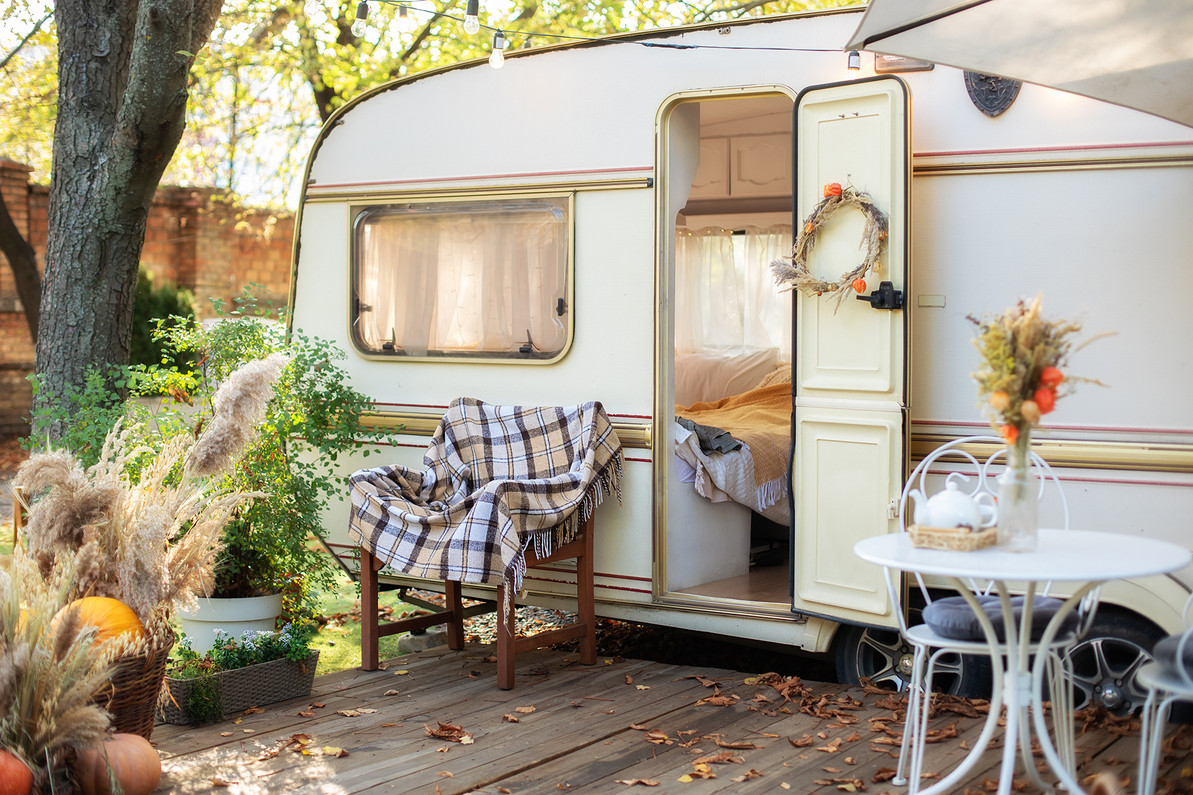How to Grow Plants in an RV
You love being on the road in your RV, but you sure miss gardening. If your love of plants is only equaled by your love of the RV lifestyle, you can have it all. There are ways to satisfy your green thumb while still enjoying all that RVing has to offer.
Plants are one of those accessories that make a house into a home. Whether it is that hanging pot of wave petunias on the porch, pots of fresh herbs growing in a kitchen, or just-picked produce from the backyard garden, plants perk up our surroundings and help purify the air around us. While planting a garden in a campground may only be possible with extended stays and campground owner’s permission, many RVers have mastered the art of growing things while moving about from place to place.
First, growing your own food is ecologically friendly and creates a sustainable lifestyle. Second, it eliminates the need to select less healthy foods when in areas where produce stands or grocery stores are far and few between. Because you grow it, there is less chance of contamination from unsanitary processing or chemicals used in growing the vegetables or produce. Finally, a meal made with fresh ingredients that a person grew themselves is a fulfilling way to end the day, especially when it can be enjoyed around a fire or watching the sun set over a lake.
There are some considerations to contemplate before setting up your RV garden. For one, it needs to move from place to place, easily adapt to the climate and be secured during travel. The growing pots need to be small enough to not cause issues inside the RV but large enough to grow the crops you want. And don’t forget that containers of potting soil and growing plants will add weight to the RV. Don’t overlook whether it makes sense to garden in your rig. For plants to thrive and produce, there needs to be access to the right light, correct amount of hydration and keeping the container soil fertile.
RV green thumbs should also pay attention to the rules regarding the transport of plants across state lines. Some states have regulations in place to restrict plants within that state to reduce the introduction of pests and invasive species. Some states require certification that the plants and soil is pest free; others will only allow plants that have been grown indoors. California is one of the states with strict regulations, as is Arizona and Florida.
According to the USDA, the federal government restricts interstate movement of certain commercial plant shipments, as well as parasitic plants, Federal noxious weeds, and specific plants in quarantine, such as citrus trees. It does not regulate the interstate movement of house plants transported by travelers. The states, however, are charged with enforcing their own agriculture rules. Contacting the state in question’s State Plant Regulatory Office provides information on what is restricted.
If growing some produce or herbs is your goal, there are some excellent choices. Varieties of lettuce and other leafy crops are a good choice for those with limited space. Lettuce grows quickly and can be grown repeatedly in the same pot of soil. Herbs such as rosemary, thyme and marjoram are also well adapted to a portable life, especially in dry and sunny conditions. Other herbs to consider are basil and oregano. Tomatoes, small carrots and spring onions are also well suited for container to table gardening.
As for house plants, almost anything that you grow in a house can adapt to the inside of an RV. If you have a favorite plant at home, there’s no reason why you cannot take it along with you on the road. Make sure the environment is conducive to its plant health and be sure to care for it the same way you would at home. Eliminate the possibility of an overturned pot by making it secure while the RV is moving.
Consider the alternative to plants that need a lot of care, such as cacti or succulents. Succulents, especially, are very popular and won’t be affected like those plants which require a more tender treatment like orchids.
Some creative ways to grow plants within the confines of RV life include using hydroponics, which means growing plants in sand, gravel, or liquid, with added nutrients but without soil. This is a way around the state restrictions that require pest-free soil certifications. Hydroponic growing systems come in many sizes and colors.
Shelves can be adapted to hold containers, such as ceramic or terracotta pots or even mason jars, in place. An easy design is to cut a hole in a wooded shelf so the container fits in tightly but does not allow it to fall through. Secure it in place on a wall in the RV using wall anchors and brackets. This is a good DIY project or adaptations of this can be found on craft websites.
Hanging pots takes advantage of the vertical space in the RV. A series of staggered wall shelves or some decorative wall brackets or hooks can secure the plants in place and maximize the number of plants you can have inside the rig. Even hanging a shelf from the ceiling can be a way to utilize little used space to grow a plant or two or three.
Find sites within your RV or camper that are ideal for plants, such as a shower with a skylight, the dashboard of a parked vehicle or even the bed of a pickup truck when moving from place to place. The kitchen sink is a safe place for smaller pots too.
With a little thought, some ingenuity and effort, greening up your RV lifestyle can be accomplished. Whether you want a few plants to brighten up that closed in space or want to have fresh herbs to use in a favorite recipe, gardening while RVing is possible. Consider this saying: “The love of gardening is a seed once sown that never dies.”
Recent Posts
-
Traveling to the RV Hall of Fame in Elkhart, IN
If you are traveling to Elkhart, IN to see the RV Hall of Fame, getting off the toll road at exit 96 …Nov 14, 2025 -
Best RV Air Conditioners of 2025: An Expert Guide From RecPro
Quick Answers Best overall RV air conditioner: RecPro 15K Quiet AC with Heat Pump (RP-AC3800) Best f …Oct 29, 2025 -
The Nuclear Nomads Expand Sofa with New Recliner Section Install
The Nuclear Nomads are a full time RV family living in south Florida. Andi and Joey value quality ti …Oct 24, 2025 -
Trailer Wiring Guide: How to Wire Your Trailer for Safety and Efficiency
Table of Contents 1. Common Types of Trailer Connectors 2. Trailer Wiring Diagrams: Color Codes and …Aug 20, 2024 -
How to Keep Your Pets Safe While Camping
RVing and camping are a great getaway from the hustle and bustle of work and the city and the day-to …Jul 02, 2024 -
Why Replace Your RV Furniture?
You may wonder when is the best time to replace your RV furniture. There is no one right answer to t …May 20, 2024







